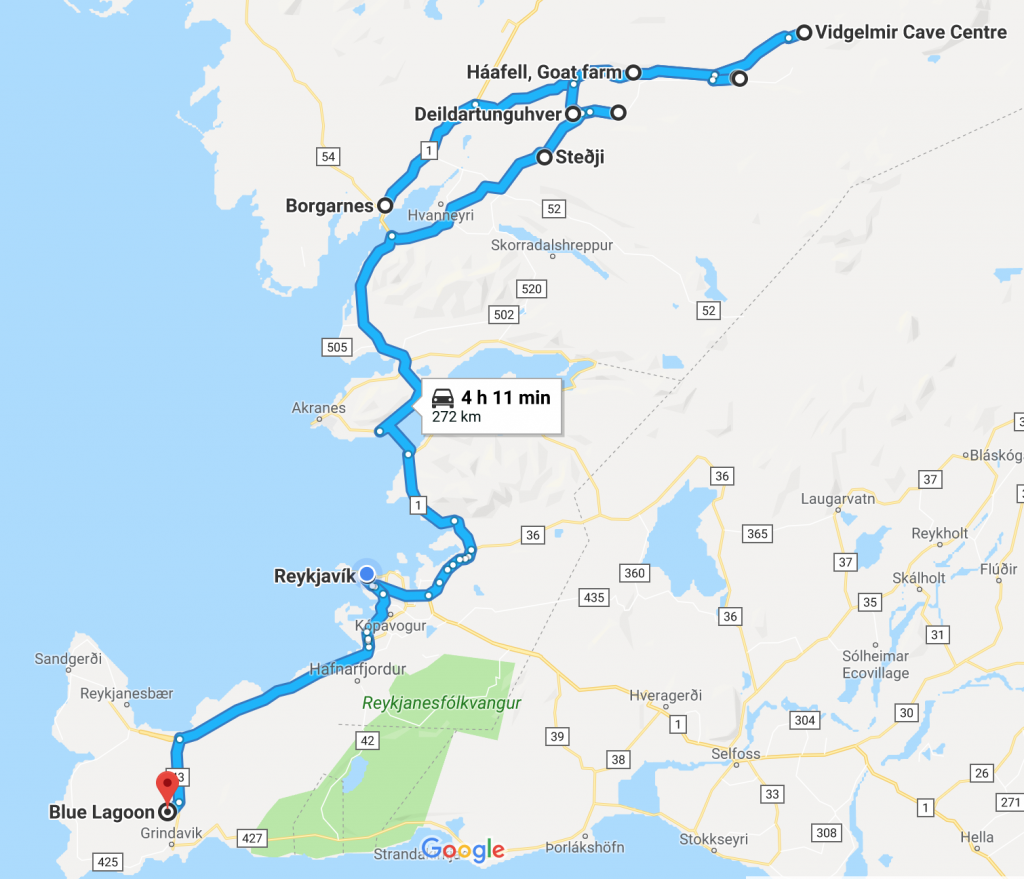Heigh ho! heigh ho! A spelunking we will go!
First thing this morning we were heading inland from Borgarnes to Víðgelmir to go spelunking! Víðgelmir is a lava tube situated in the Hallmundarhraun lava field that was created in around 900 AD. The lava tube is on a private farming property but the owners have made a few sections of it very accessible for visitors. There are two main openings to the lava tube which were formed when the roof of the tube collapsed. Víðgelmir is 1.5kms long and the largest areas inside the cave are as big as 15.8 m high and 16.5 m wide. It is by far the largest lava tube of its kind in Iceland – a country that is literally covered in volcanic cave action.
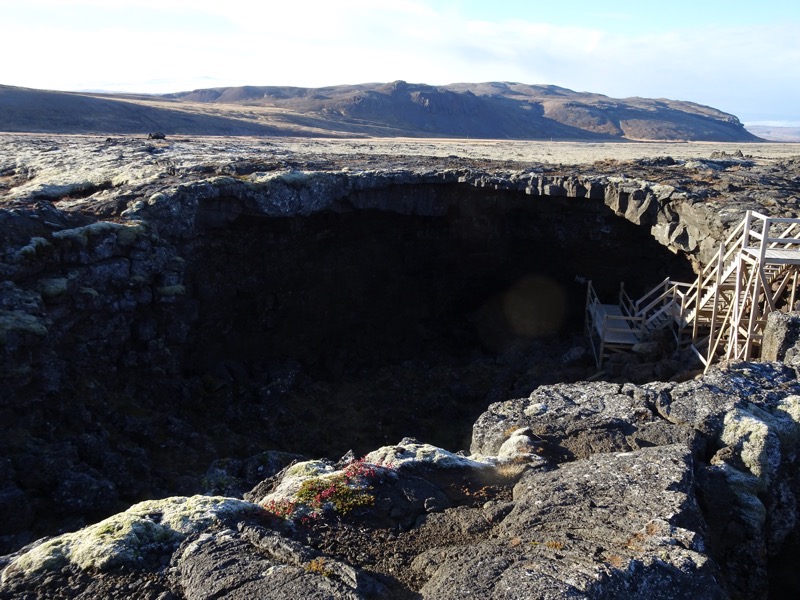
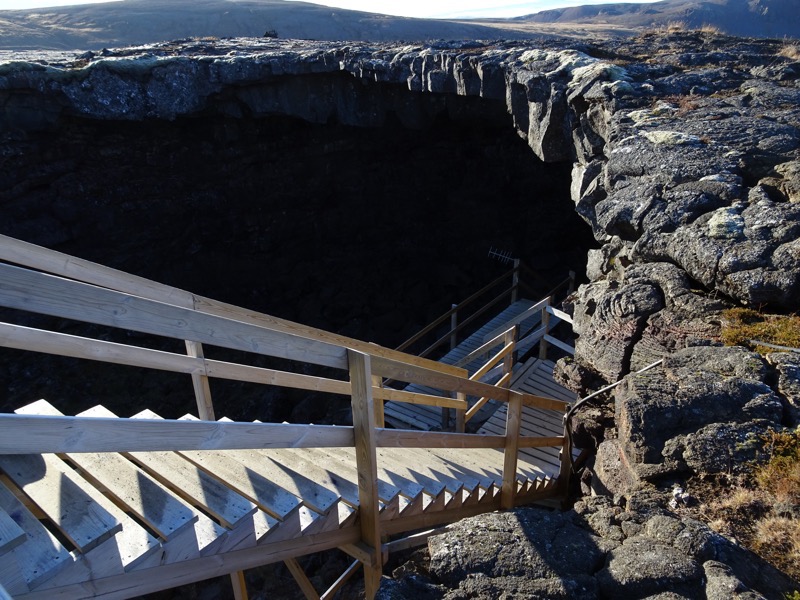
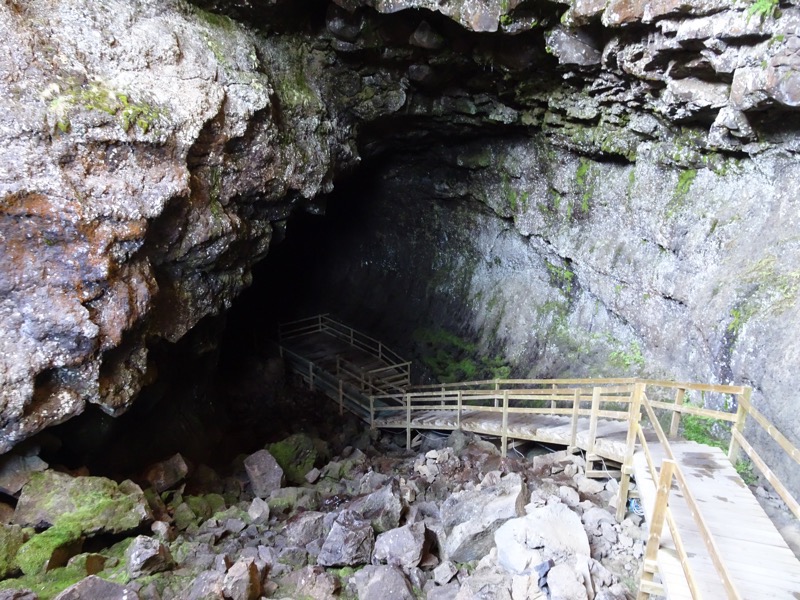
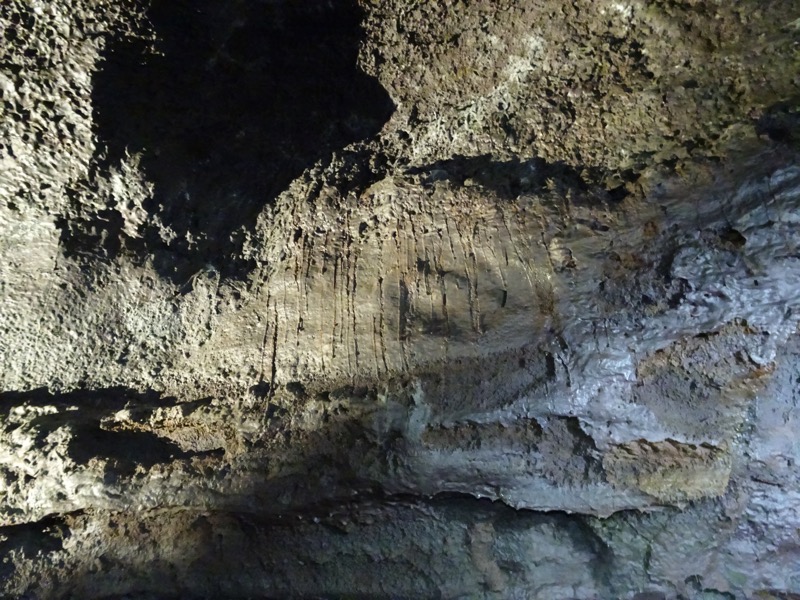 The cave has some wide entrance but narrows down in one area that we traversed… it could be a bit claustrophobic for some, but given I am all of 5′ tall, I was able to just duck my head a little and skooch down the passage. At this tight point, the owners have installed an iron gate in the early 90s to preserve the of the delicate lava formations which tourists and geologist had a habit of souvenir’ing or accidentally destroying.
The cave has some wide entrance but narrows down in one area that we traversed… it could be a bit claustrophobic for some, but given I am all of 5′ tall, I was able to just duck my head a little and skooch down the passage. At this tight point, the owners have installed an iron gate in the early 90s to preserve the of the delicate lava formations which tourists and geologist had a habit of souvenir’ing or accidentally destroying.
So TIL from our very friendly geologist-guide, Johannes, that Icelanders have a running rivalry with Hawaiians. Who’d have thunk, right? Iceland vs Hawaii. Why? you may ask, well as it turns out, Hawaiians think they have authority when it comes to naming lava formations. However, the Icelanders have had their own Icelandic words for most lava formations for over 1000 years. So for every ‘traditional’ (ie: Hawaiian) term that Johannes gave us for the lava formations, he also gave us an Icelandic term. Which made for a bloody confusing time of it. This one was quite distinct though – apparently the Hawaiians cause these piles of drip formed lava, ‘lava roses’, in Iceland, however, they are a bit blunter in their descriptions and they call them, ‘lava shits’ – and fair enough too, they look far more like a cow pat than a flower!
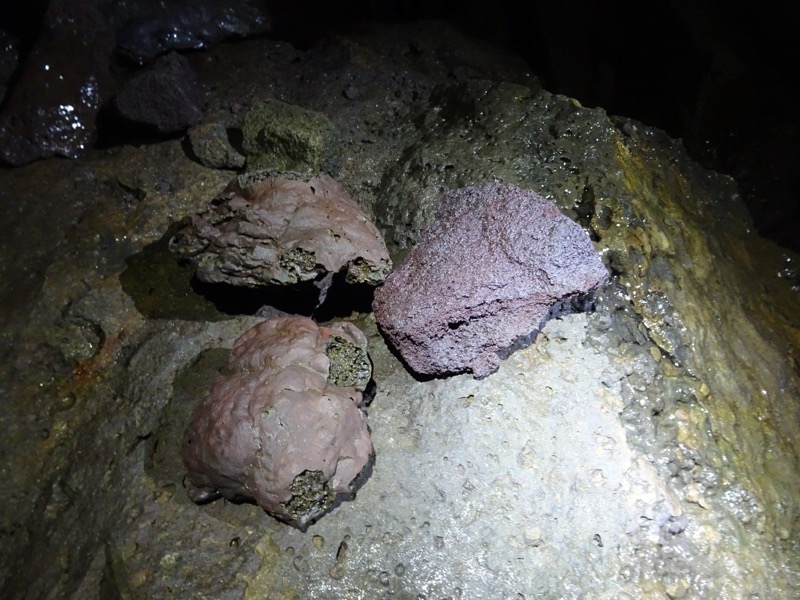 The colours in the rock formations were simply astounding.
The colours in the rock formations were simply astounding. 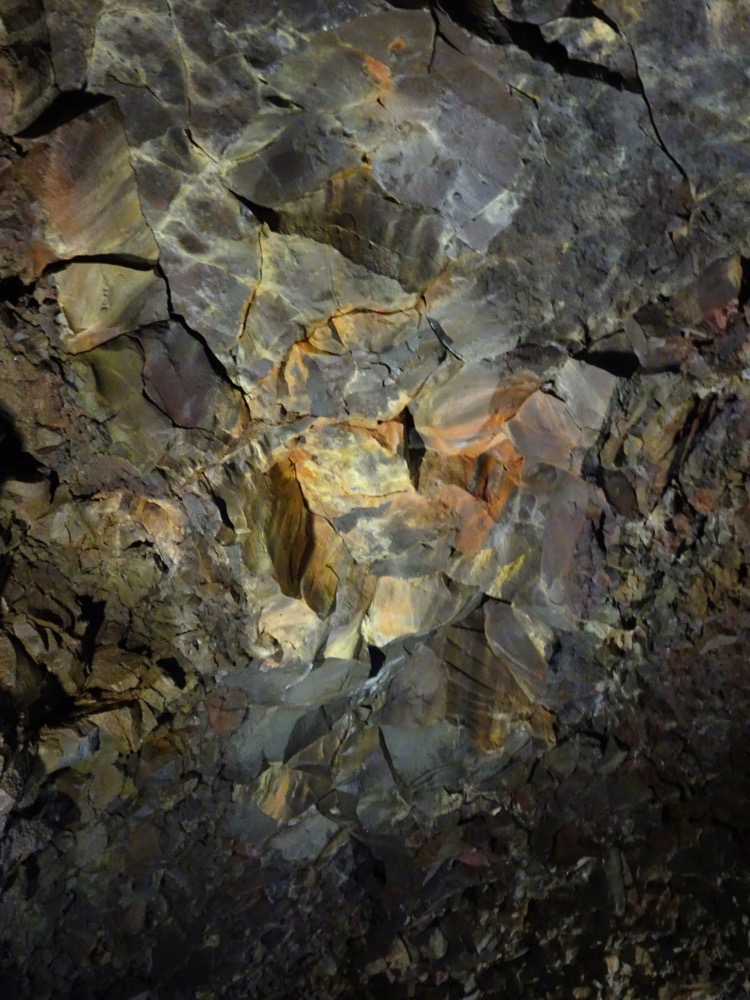
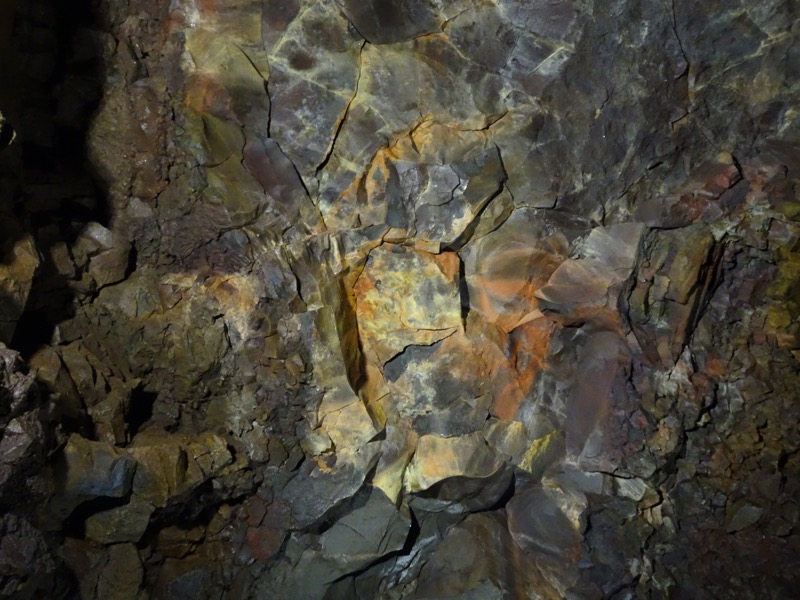 Unlike the sedimentary type caves we are used to seeing back home when water filters down through the rock into the cave, it doesn’t form sparkling stalactites and stalagmites, instead, it forms ice columns. The water drips down in the same spot each winter and given it is usually around 0° in the cave, the water freezes on top of the last drop making icicle stalagmites that can reach as high as 3m. Each year in the summer, the ice formations are diminished only to return each winter. Normally there are no ice formations in the cave this early in the year – it’s only autumn – but this year has been a ‘really shit summer’ and rather wet, so there were ice formations that hadn’t disappeared since last year.
Unlike the sedimentary type caves we are used to seeing back home when water filters down through the rock into the cave, it doesn’t form sparkling stalactites and stalagmites, instead, it forms ice columns. The water drips down in the same spot each winter and given it is usually around 0° in the cave, the water freezes on top of the last drop making icicle stalagmites that can reach as high as 3m. Each year in the summer, the ice formations are diminished only to return each winter. Normally there are no ice formations in the cave this early in the year – it’s only autumn – but this year has been a ‘really shit summer’ and rather wet, so there were ice formations that hadn’t disappeared since last year.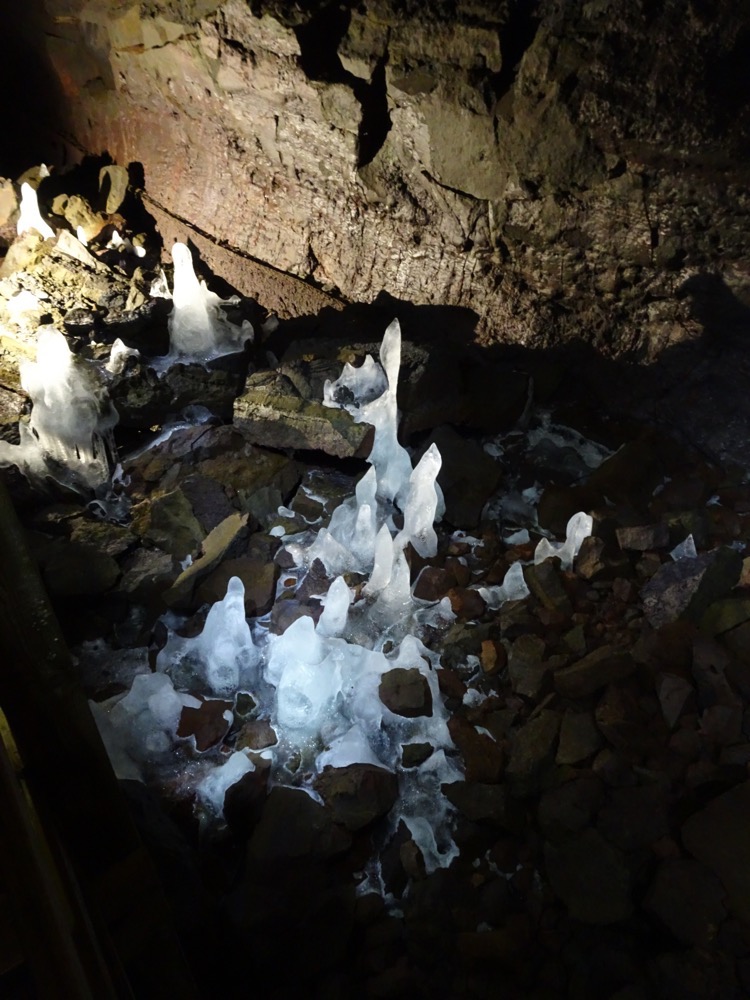 The cave has recently had quite a bit of construction work done with walkways to protect the delicate lava formations and to make it more accessible to visitors.
The cave has recently had quite a bit of construction work done with walkways to protect the delicate lava formations and to make it more accessible to visitors.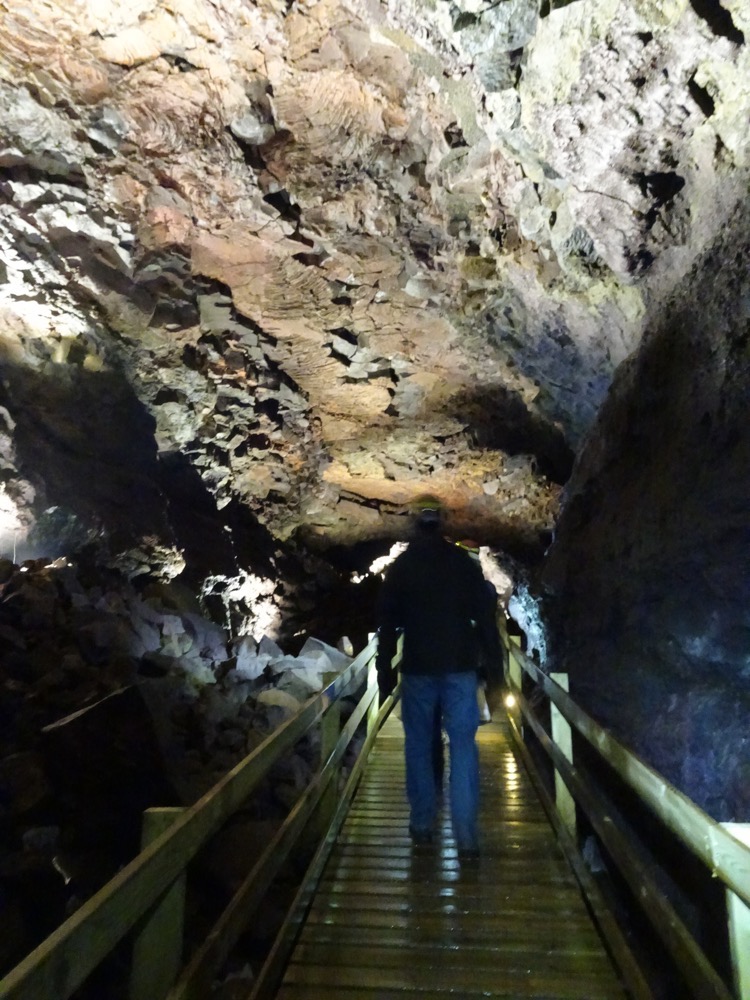
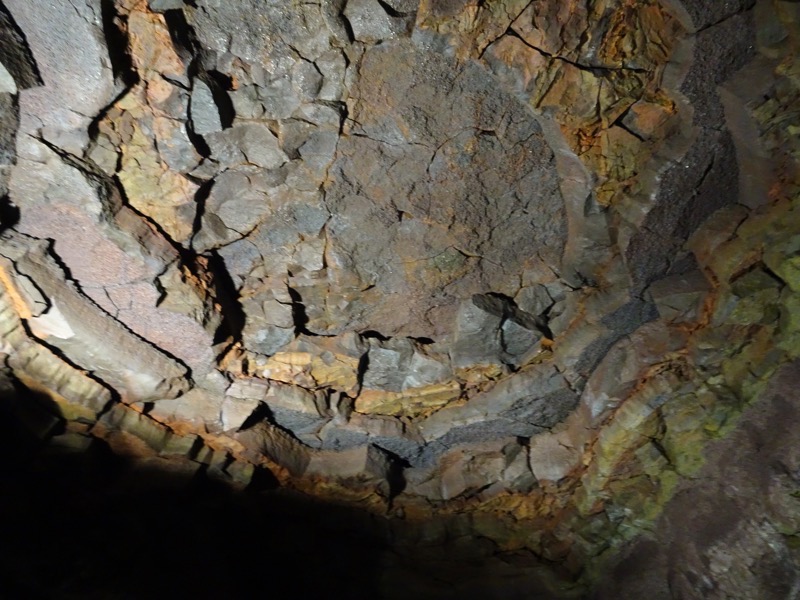 The lava tube caves are formed when a low-viscosity lava flow develops a continuous and hard crust as it cools, which then thickens and forms a roof above the molten lava stream. When the eruption subsides, the still-molten lava moving beneath the crust will continue to drain downhill, eventually emptying out and leaving an open lava tube cave. The cave will usually have larger tubes with smaller tubes protruding off from the main caves – Johannes used an analogy of a human body (body metaphors, love it!). The volcano is the heart pumping out the lava/blood, into the major arteries, which also forces the lava into smaller capillaries.
The lava tube caves are formed when a low-viscosity lava flow develops a continuous and hard crust as it cools, which then thickens and forms a roof above the molten lava stream. When the eruption subsides, the still-molten lava moving beneath the crust will continue to drain downhill, eventually emptying out and leaving an open lava tube cave. The cave will usually have larger tubes with smaller tubes protruding off from the main caves – Johannes used an analogy of a human body (body metaphors, love it!). The volcano is the heart pumping out the lava/blood, into the major arteries, which also forces the lava into smaller capillaries.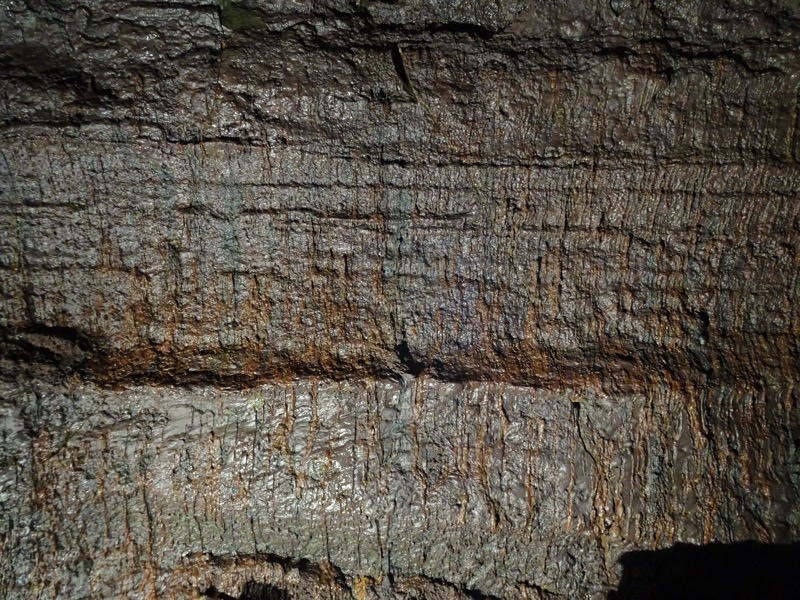 As the lava is dragged along inside the tube with its cooling roof and walls, the level/height of the lava flow is evidenced in layers on the walls, leaving a texture and coloured rock that looks like chocolate cake.
As the lava is dragged along inside the tube with its cooling roof and walls, the level/height of the lava flow is evidenced in layers on the walls, leaving a texture and coloured rock that looks like chocolate cake.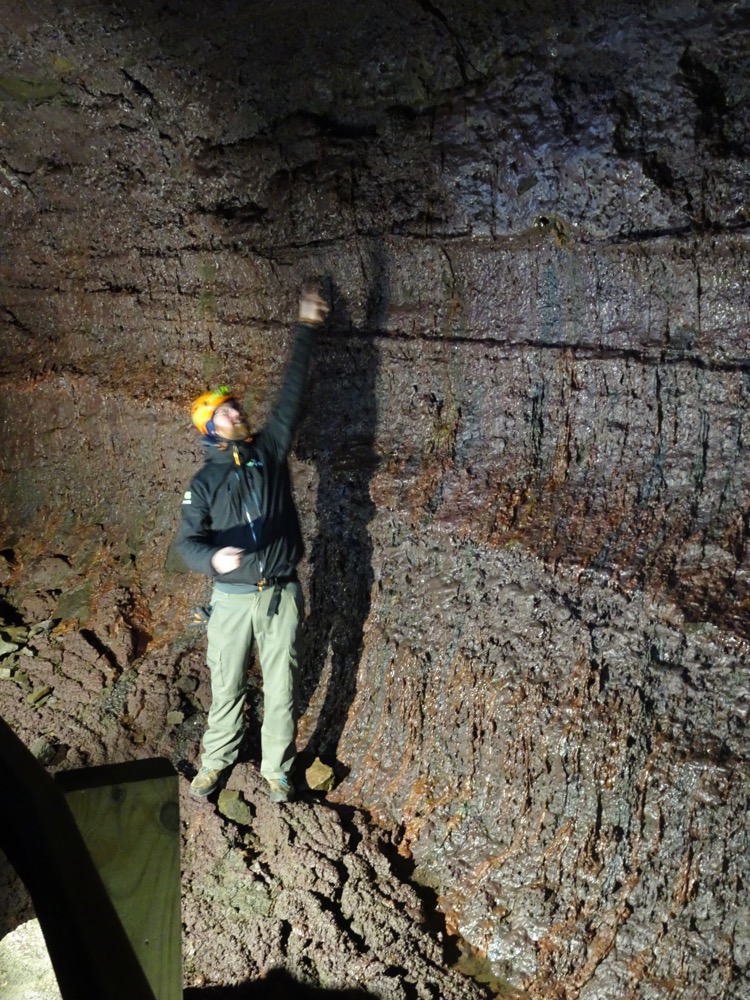 There is approximately 80-90 steps to traverse to get into the lava cave – and the same again on the way back out.
There is approximately 80-90 steps to traverse to get into the lava cave – and the same again on the way back out.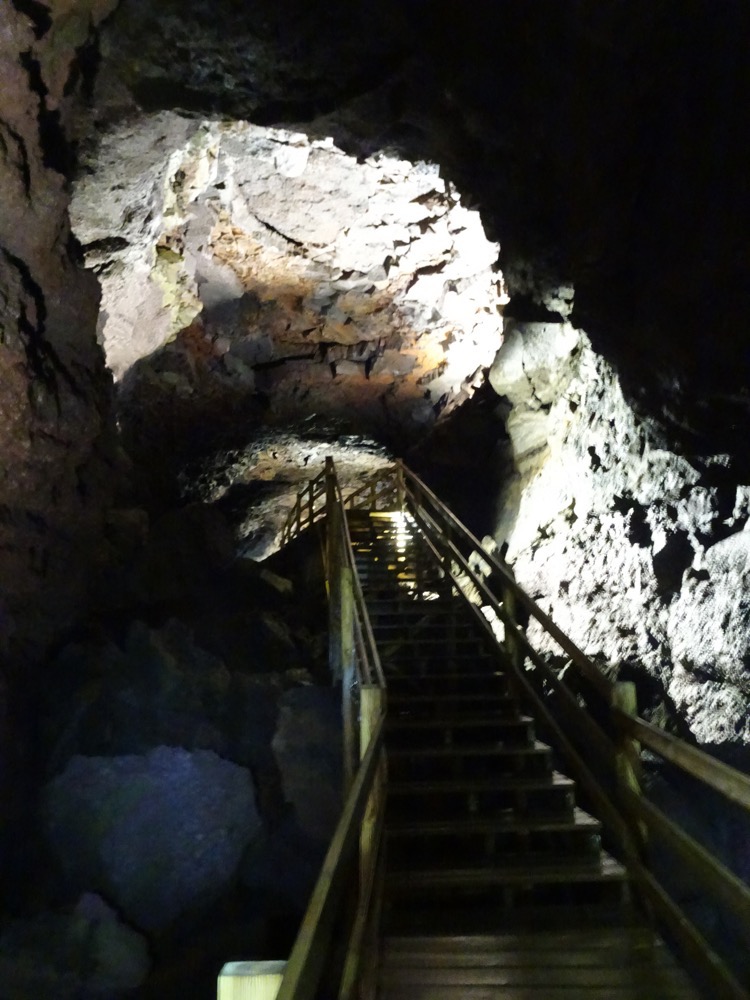 At the end of this section of lava tube is a collapsed roof which marks the end of the ‘amateur’ spelunking tour. For people with a bit more experience, you can go much deeper into the cavers, but apparently, that takes things like, fitness, agility and strength.
At the end of this section of lava tube is a collapsed roof which marks the end of the ‘amateur’ spelunking tour. For people with a bit more experience, you can go much deeper into the cavers, but apparently, that takes things like, fitness, agility and strength. There is a large platform at this point in the cave and Johannes had us all turn off our headlamps before turning off the cavern lights. It is totally pitch black. You can open and close your eyes and not tell any difference, you can wave a hand in front of your face and not see a thing. Johannes said to us, ‘Now you don’t have to come to Iceland in the winter, this is what it’s like.’ Yep, he was a bit of a funny bugger.
There is a large platform at this point in the cave and Johannes had us all turn off our headlamps before turning off the cavern lights. It is totally pitch black. You can open and close your eyes and not tell any difference, you can wave a hand in front of your face and not see a thing. Johannes said to us, ‘Now you don’t have to come to Iceland in the winter, this is what it’s like.’ Yep, he was a bit of a funny bugger.
On the way back out all the features we had passed looked completely different.
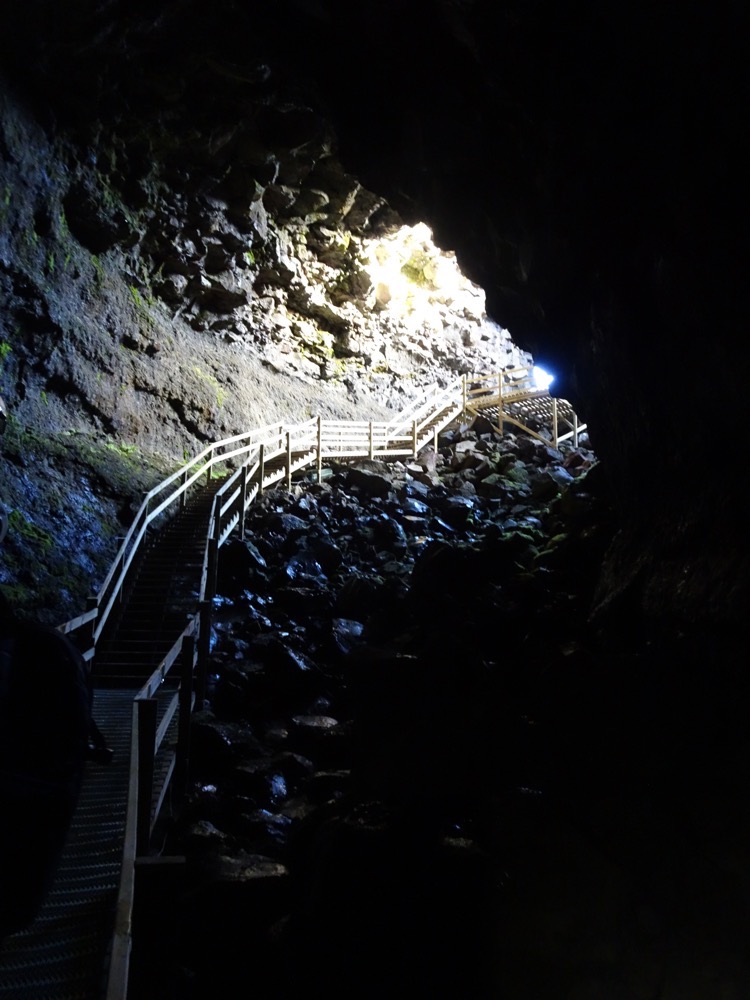 The cave opening forms a bit of a love heart if you stop at the right place on the way out… awww.
The cave opening forms a bit of a love heart if you stop at the right place on the way out… awww.  Back above ground the light is way too bright, even though normally the light quality this far north has a wonderful soft feel about it (compared to the harsh Australian light, I guess everything does though!).
Back above ground the light is way too bright, even though normally the light quality this far north has a wonderful soft feel about it (compared to the harsh Australian light, I guess everything does though!).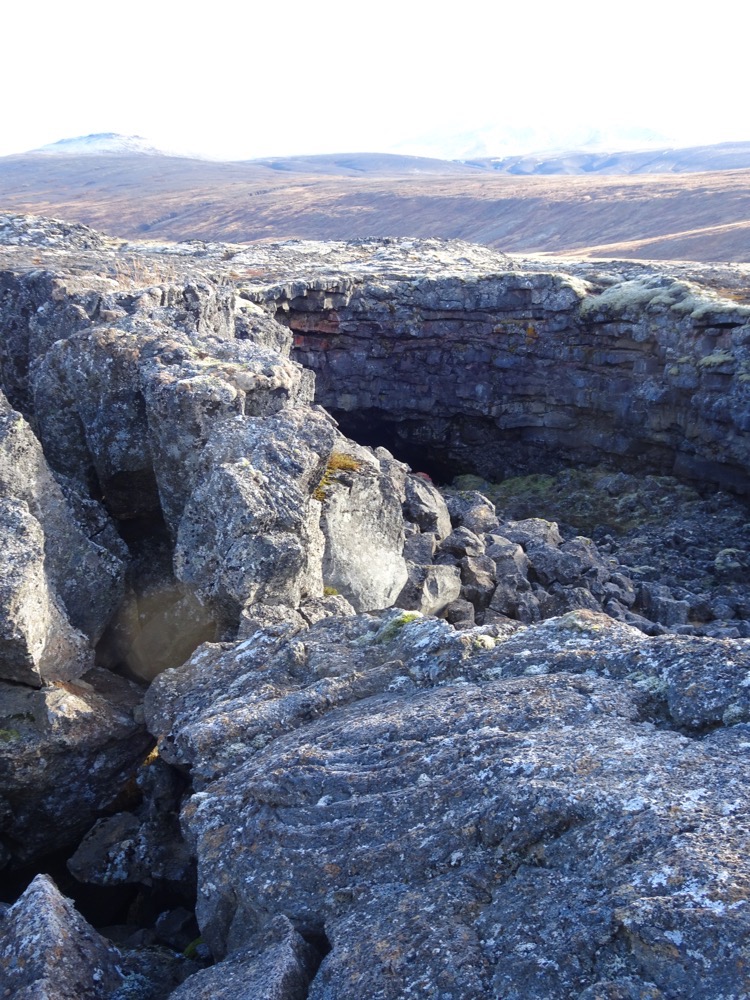

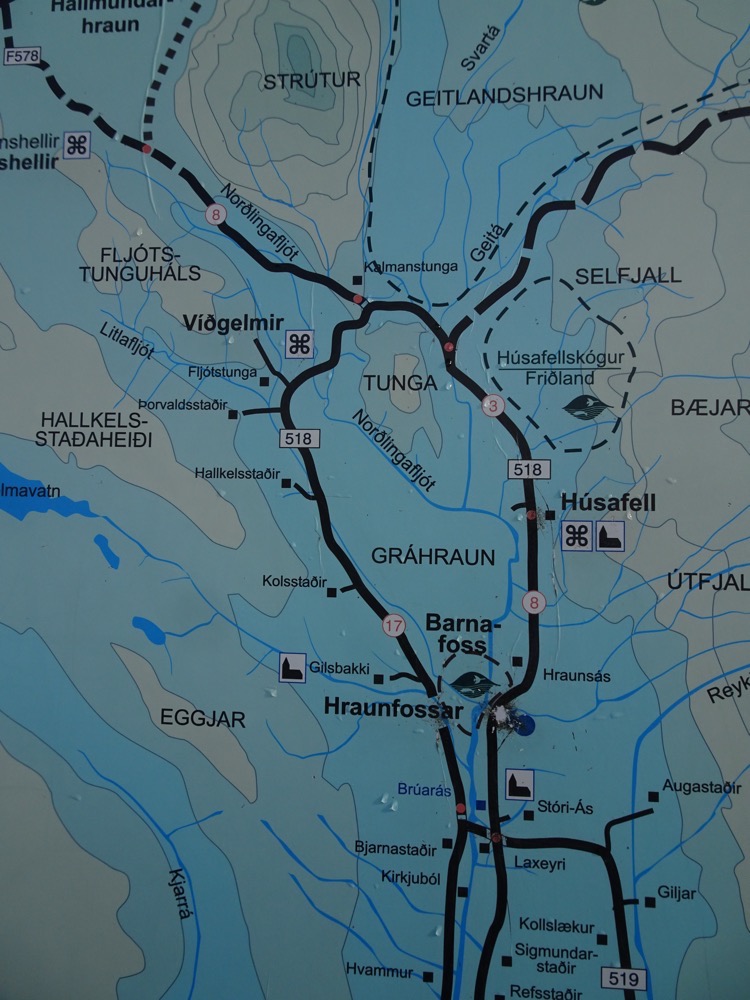
After leaving the caves we went for a short drive to Hraunfossar which is a cascading series of waterfalls formed from the runoff from the Langjökull glacier. The name for these falls is made up of the Icelandic words hraun, (lava) and fossar, (which no doubt everyone has now picked up is waterfall).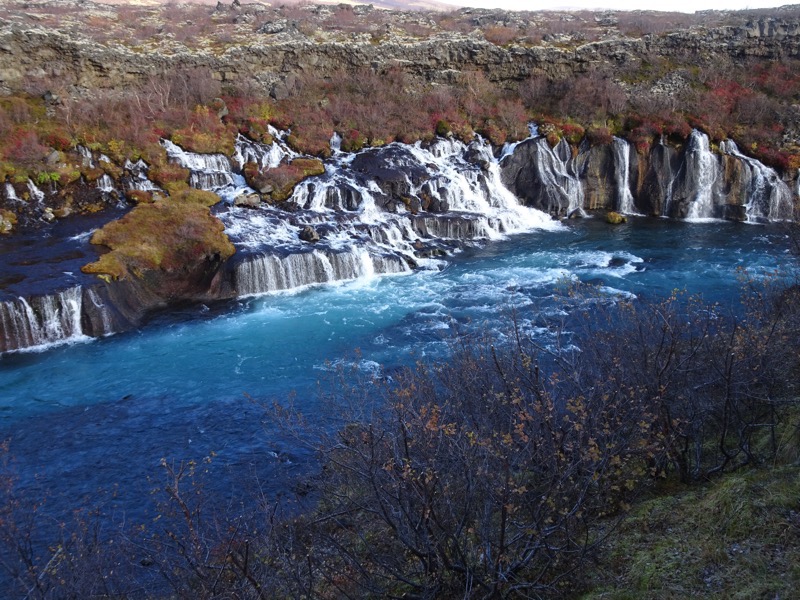
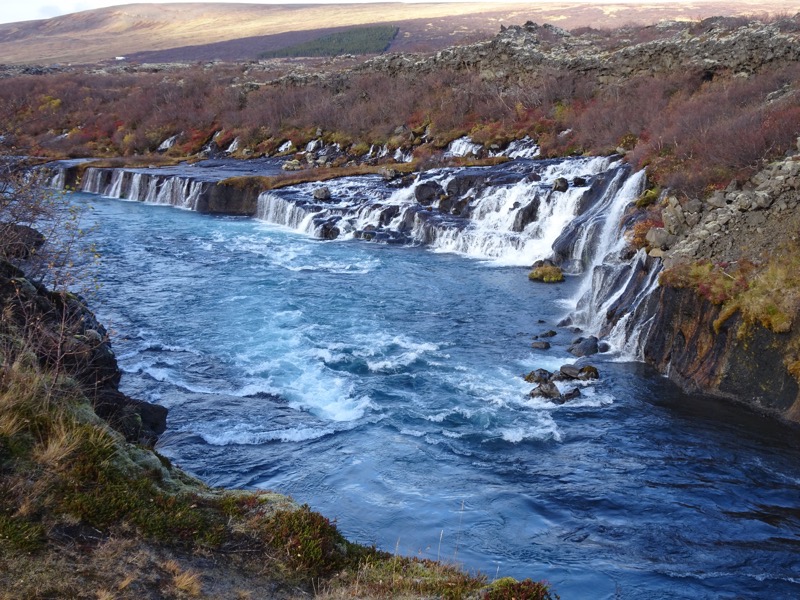
Literally, two minutes walk upstream from Hraunfossar, is another waterfall called Barnafoss. Its name means ‘child’s waterfall’, stems from a tragic accident which is said to have taken place here. There are several Icelandic folk tales associated with Barnafoss, the most famous being about two boys who lived at a nearby farm, Hraunsás. One day, the boys’ parents went with their ploughmen to a church. The boys were supposed to stay at home, but they grew bored they decided to follow their parents. They took the shortcut across the natural stone-bridge that used to be above the waterfall, but fell into the water and drowned. Their mother was obviously distraught and was said to have destroyed the natural arch so this could never happen again. Depending on which story you read, you either don’t hear how she achieved this, or they say she put a spell on the bridge and it was shortly destroyed in an earthquake.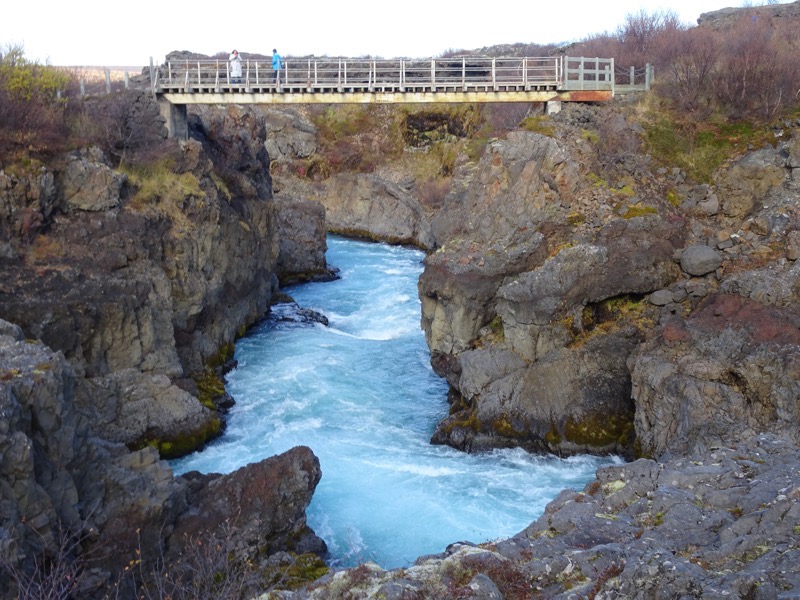
 The natural arch went across the rocks in the top of this image – you can see how dangersous this woud be the water volume is incredible.
The natural arch went across the rocks in the top of this image – you can see how dangersous this woud be the water volume is incredible.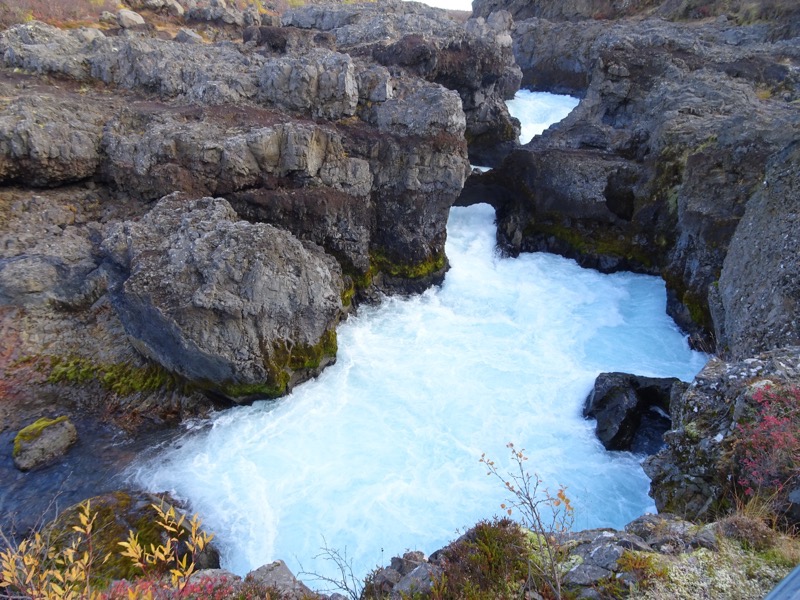
After this, we made a very quick pit stop at the Háafell Icelandic Goat Farm – a very quick stop because we didn’t realise they were closed today for a funeral. Go us, way to intrude on people! We had seen some flags flying at half mast as we drove around today, and I had looked up to see if someone of importance had passed away, but Icelandic tradition is to fly flags at half-mast whenever someone from a local community has died. However, even surprised as the owner was to see us, she didn’t mind us having a look around as they were getting ready to go to church.
 Icelandic goats are also known as the ‘settlement goat’. They are an ancient breed of Norweigan domestic goat that were imported to Iceland over 1100 years ago. This breed was nearly extinct by the late 19th century, but recovered around World War II, only to then see numbers drop off again. A census in 2003 saw only 348 goats in 48 flocks throughout the entire country. A concerted effort to increase their numbers has seen that number improve to 849 in 2012. Because the breed has been isolated for centuries, the Icelandic populations are highly inbred.
Icelandic goats are also known as the ‘settlement goat’. They are an ancient breed of Norweigan domestic goat that were imported to Iceland over 1100 years ago. This breed was nearly extinct by the late 19th century, but recovered around World War II, only to then see numbers drop off again. A census in 2003 saw only 348 goats in 48 flocks throughout the entire country. A concerted effort to increase their numbers has seen that number improve to 849 in 2012. Because the breed has been isolated for centuries, the Icelandic populations are highly inbred. 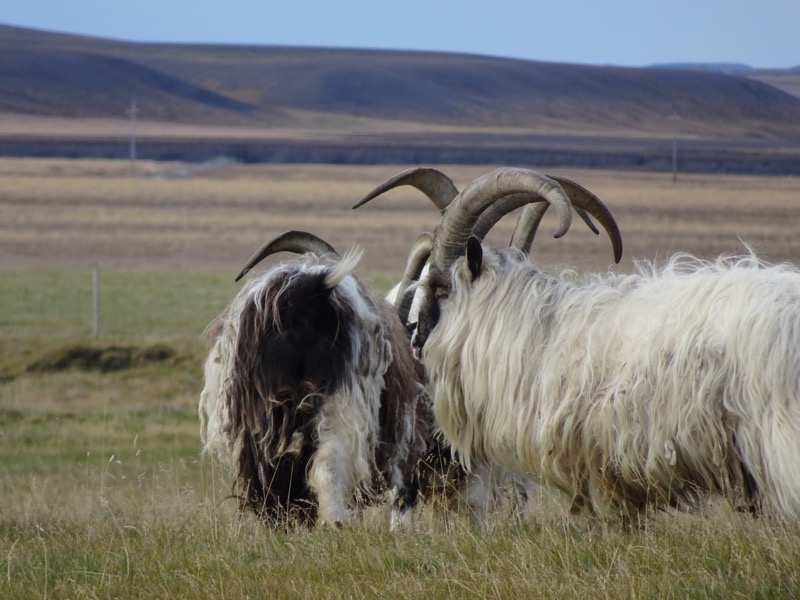

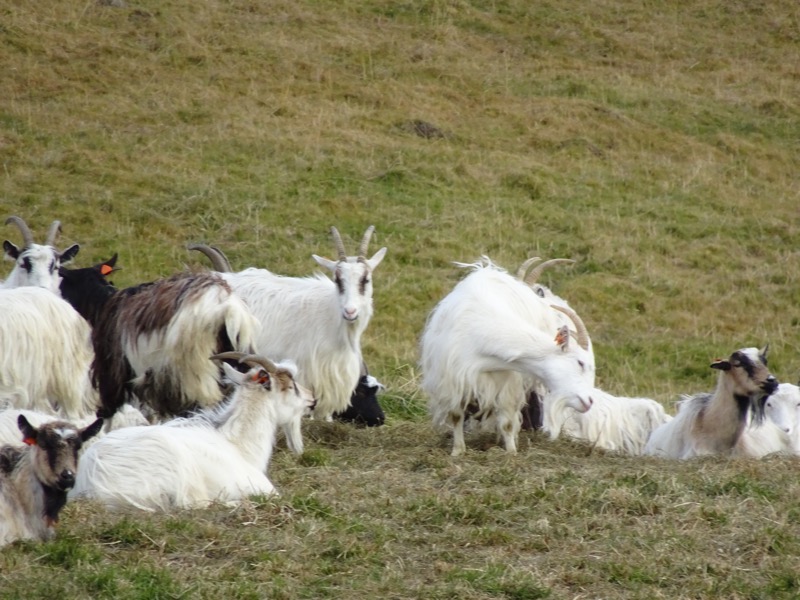 Even though the Icelandic goat has a coat of high-quality cashmere fibre, they tend to be kept more as pets, and are currently of limited economic value – so the Icelandic government subsidizes farmers to ensure the survival of the species.
Even though the Icelandic goat has a coat of high-quality cashmere fibre, they tend to be kept more as pets, and are currently of limited economic value – so the Icelandic government subsidizes farmers to ensure the survival of the species. Not long after we left the goat farm, we found ourselves stopping on the side of the road to take more photos of yet more stunning scenery and when we went to drive off, we heard a rather disconcerting scraping noise under the car – it sounded like something metal stuck behind the read drivers side wheel.
Not long after we left the goat farm, we found ourselves stopping on the side of the road to take more photos of yet more stunning scenery and when we went to drive off, we heard a rather disconcerting scraping noise under the car – it sounded like something metal stuck behind the read drivers side wheel. 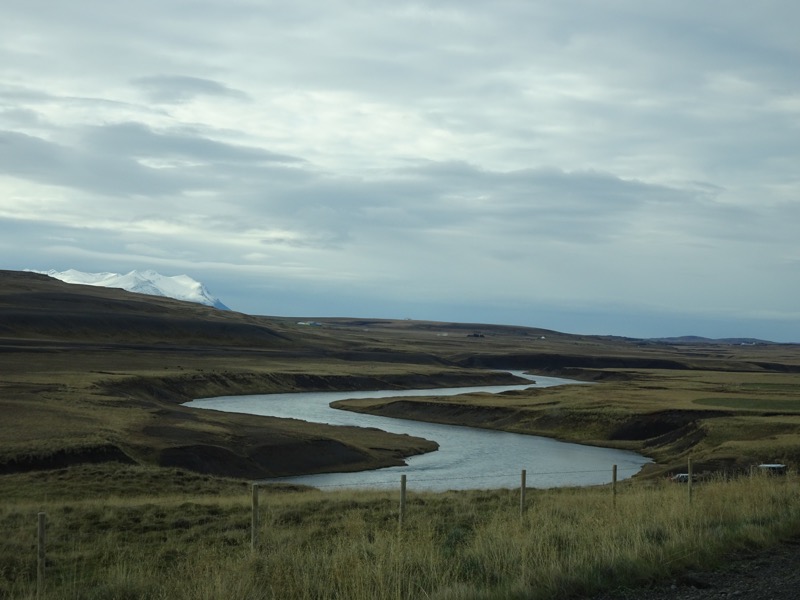
We stopped to investigated and drove forwards in tiny slow increments to try and hear where it was coming from. Ultimately there was nothing there obstructing the wheel and we think it was just dust and grit and shit on the brake pads… but once we were sure we weren’t compromising the vehicle or our safety, there was nothing we could do but move one. The noise eventually went away. It’s a mystery!?
By the time we got to the Deildartunguhvergeothermal hot spring that feeds the hydro system that heats most of the Borgarnes region, the brakes were quiet and forgotten.
Deildartunguhver is a natural hot spring that a very high flow rate – about 180 litres/second – and a very high natural water temperature – 97 °C. It is the highest-flow hot spring in Europe and a good deal of the water is piped 34kms to Borgarnes and up to 64kms to Akranes. So much steam and sulphur and hot water bubbling away. I’ve never seen anything like it.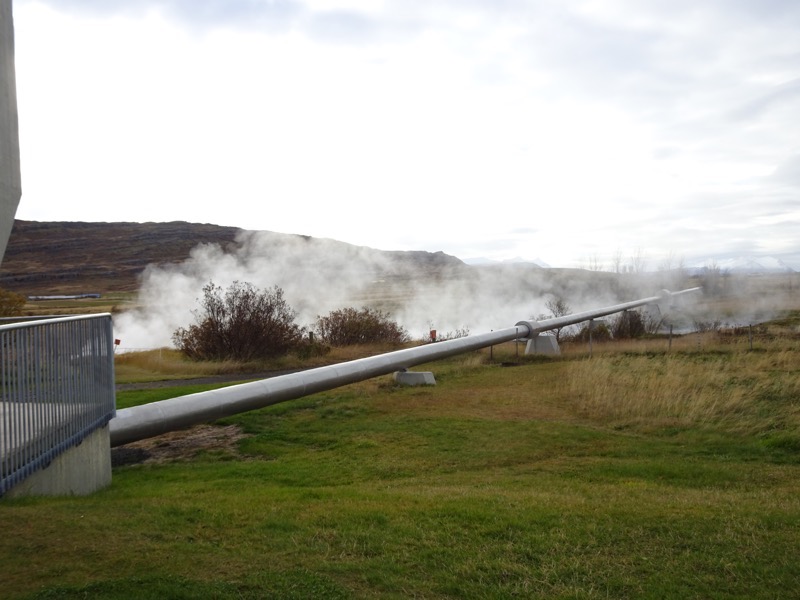


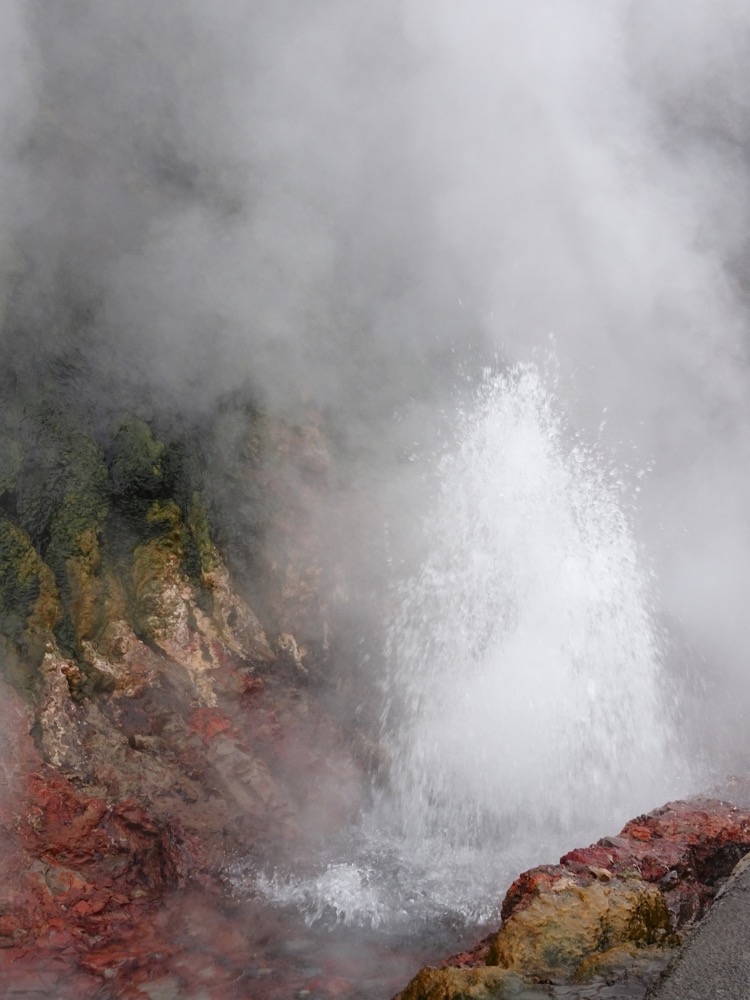



On leaving the hot springs we were headed to the Snorrastofa research centre which is dedicated to Iceland’s greatest medieval writer, poet, scholar and statesman, Snorri Sturluson (1179–1241). However, the centre is located right beside a rather large church, which today was overflowing with people attending a funeral and the research centre was closed. So we missed out on seeing the residence of the man who wrote many of the Icelandic sagas into the written record.
Instead, we decided to do a quick detour to the Stedji Craft Brewery – known for some of the most err… interesting and even controversial concoctions known to craft beer. The brewery is in a paddock at the end of a long rather quiet dirt road. There is not a lot of signage, but this rather uninviting looking sign told us we were in the right place.
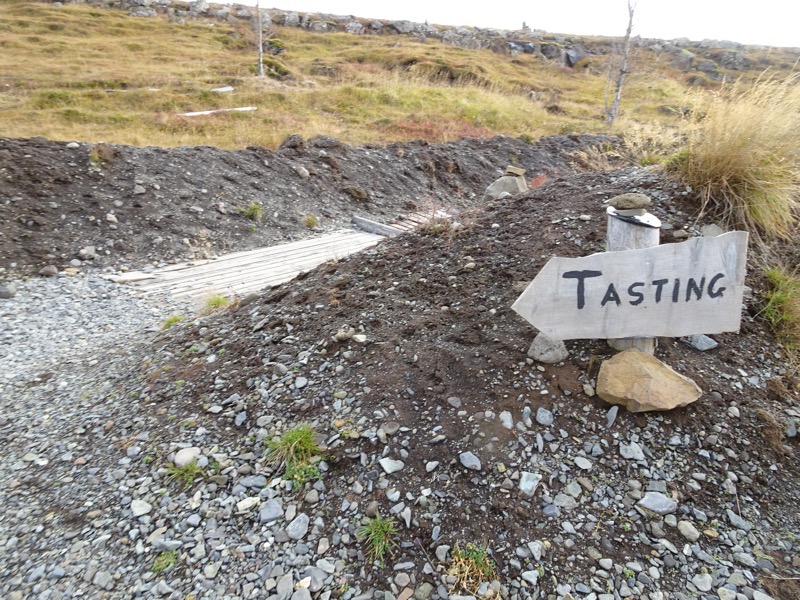
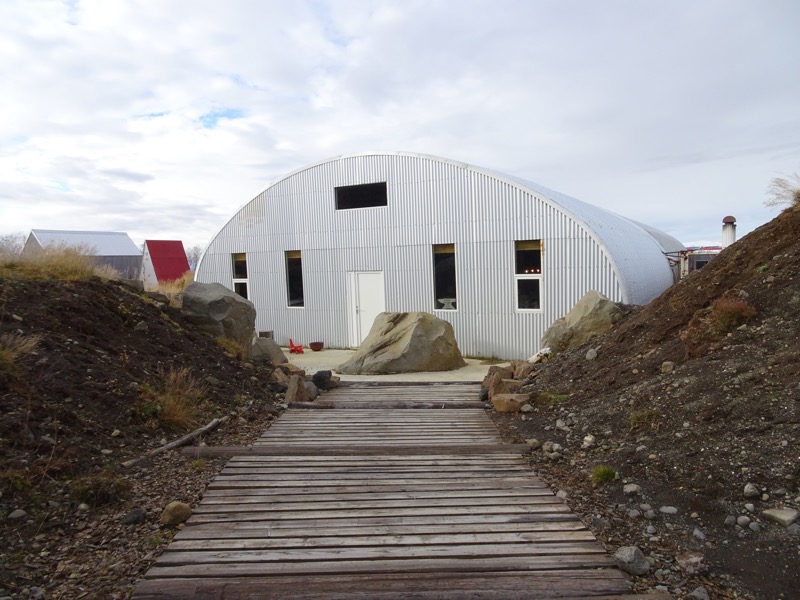
The brewery is described on the internet thusly:
“Steðji, which translates as Anvil, named after the rock formation next to Stedji Brewery and family house. A place of folklore and magic that today is the home of one of the most innovative, exciting and exuberant family brewery in the world. Steðji beer is not just a beer, it’s an alchemy of pure genius.”

I’m here to tell you, boys and girls – it doesn’t get further from pure genius than this! We tried a tasting tray of five different beers –
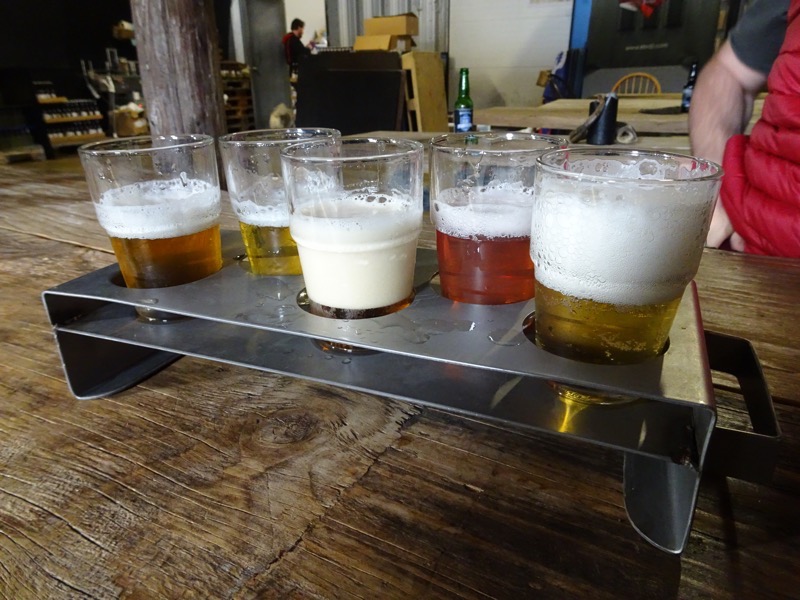 Steðji Lager – described as a very easy drinking light German lager
Steðji Lager – described as a very easy drinking light German lager
Verdict: not bad, light, tasty and definitely inoffensive
Steðji Jarðarberjabjórr – described as a light and refreshing beer with a great taste of strawberries.
Verdict: sweet beer, marketed literally as a ‘chick’s drink’, shame on them.
Steðji Dökkur bjór – German malty slightly dark stout beer.
Verdict: not my thing, but yale seemed to enjoy it better than some of the other offerings.
Steðji Icelandic Northern Lights – medium dark larger with liquorice flavours
Verdict: this shit is an abomination and if I didn’t like their puppy so much who was lurking near our table I would have spat it out all over the place.
Steðji Summer beer – an IPL with New Zealand lemon flavours. BBestseller
Verdict: This one too, was ‘not tasty’, though as yale noted, we were feeling somewhat scarred after the licquorice incident.
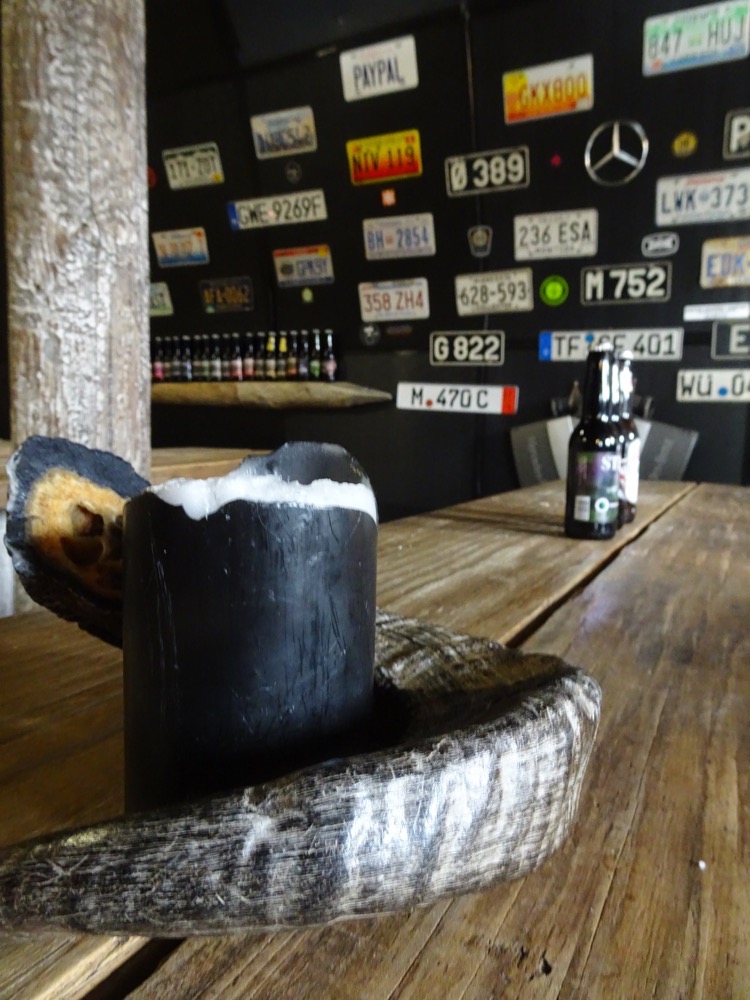
And finally, there was the Whale Beer…
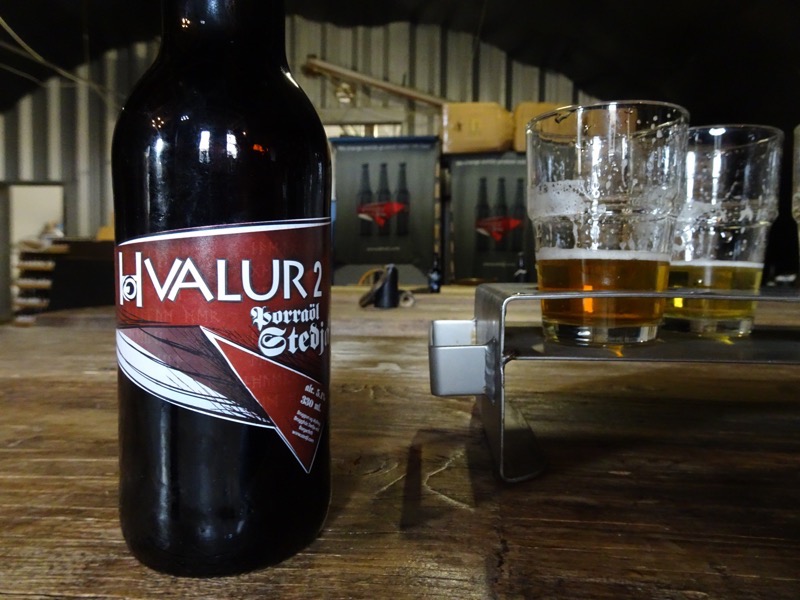 Hvalur 2 / Whale Beer – (from their website): 2015 – 2018 Hvalur 2 Þorraöl Steðji are even more controversial , again it was an ale purposely brewed for the season of Þorri, the Icelandic midwinter festival but instead of using milled whale bones we took it a step further and used sheep dung-smoked whale testicles from a Fin-whale mixed with pure Icelandic water, malted barley and hops.
Hvalur 2 / Whale Beer – (from their website): 2015 – 2018 Hvalur 2 Þorraöl Steðji are even more controversial , again it was an ale purposely brewed for the season of Þorri, the Icelandic midwinter festival but instead of using milled whale bones we took it a step further and used sheep dung-smoked whale testicles from a Fin-whale mixed with pure Icelandic water, malted barley and hops.
Verdict: Yep, whale testicles smoked in sheeps dung! Far out the winters around here must get boring! But we tried it, and honestly, it wasn’t too bad… much better thant he licquorice incident.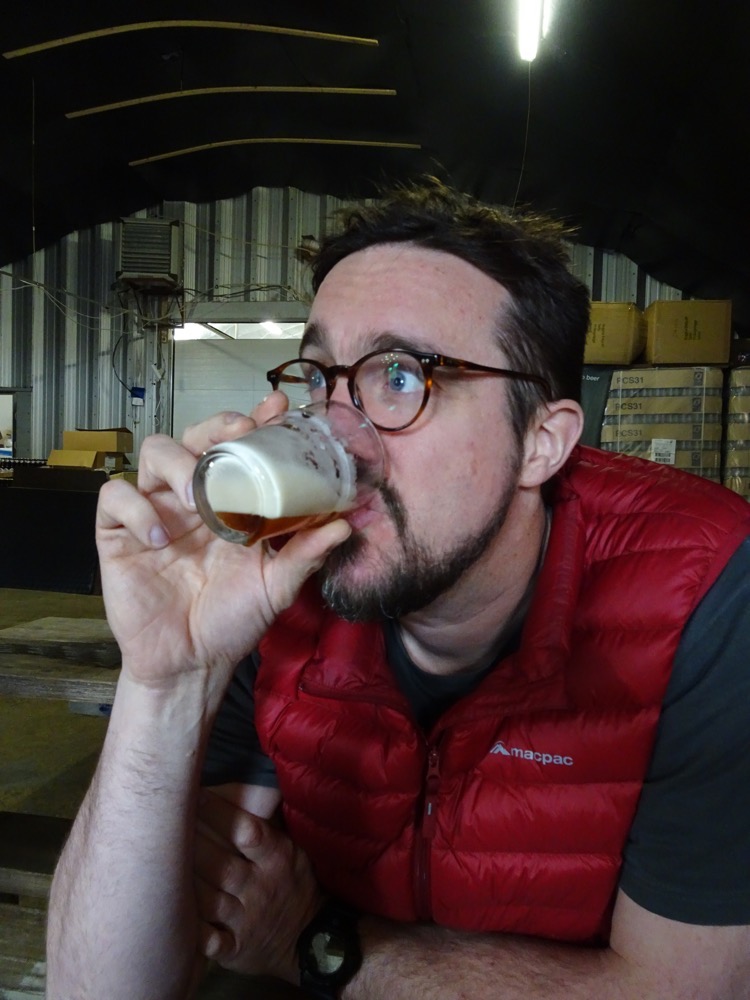 The nicest thing I can say about our brewery stop is they had a gorgeous little farm dog hanging around – she had the softest fur and such a sweet face. The beers – were interesting? Unusual? Too bloody hipster? Trying too hard? All of the above? Shudder. Traumatised.
The nicest thing I can say about our brewery stop is they had a gorgeous little farm dog hanging around – she had the softest fur and such a sweet face. The beers – were interesting? Unusual? Too bloody hipster? Trying too hard? All of the above? Shudder. Traumatised.
We then had to put up with an hour or so over more gorgeous scenery as we made our way back to Reykiavik. Our lap of the entire country nearly complete.
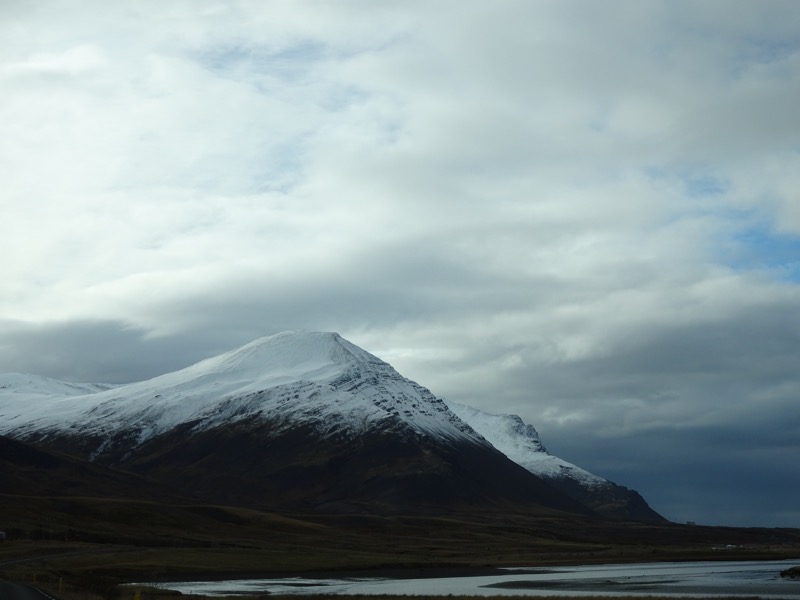
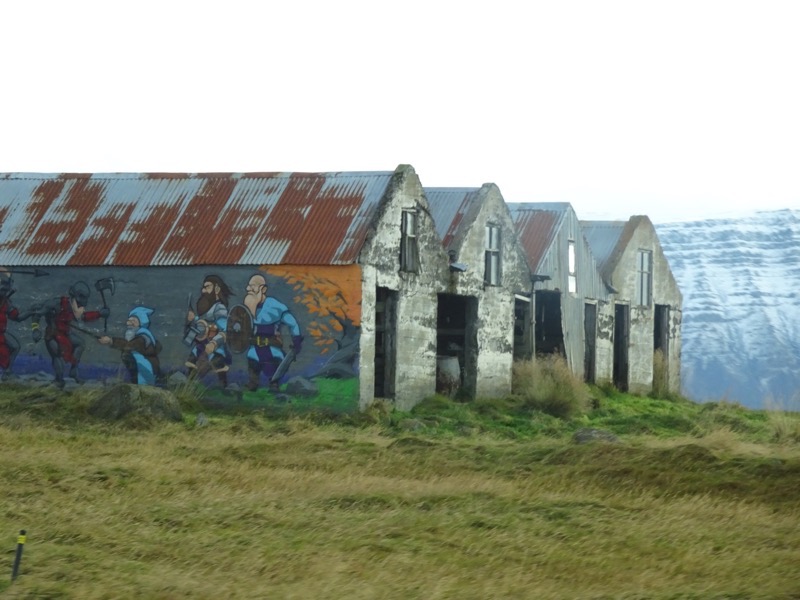 Every corner. I swear you drive around a corner, a mountain, you cut back on the road you were on to look behind you and were greeted by an entirely different vista.
Every corner. I swear you drive around a corner, a mountain, you cut back on the road you were on to look behind you and were greeted by an entirely different vista.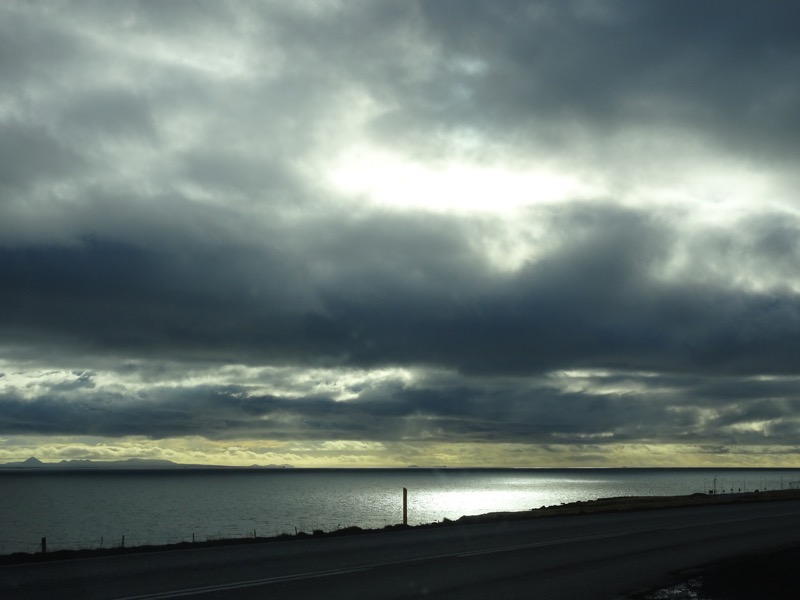
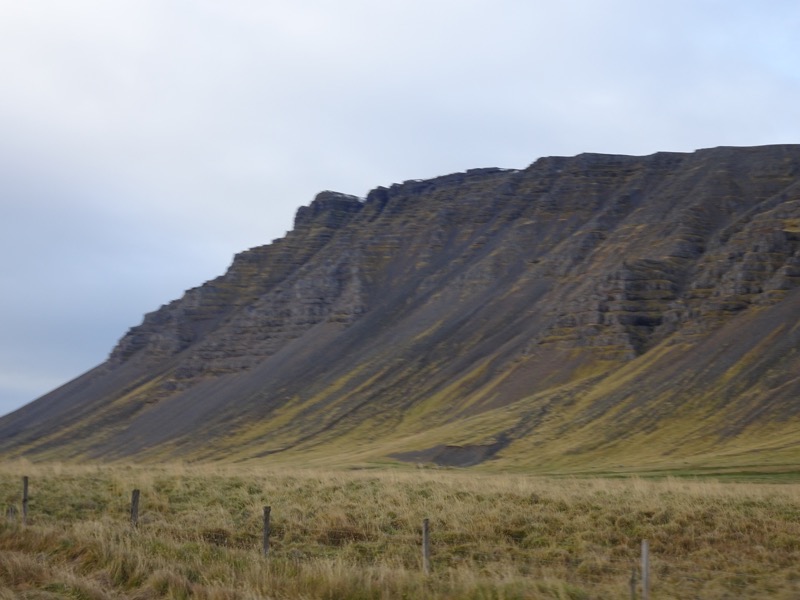
 We went through the Hvalfjarðargöng tunnel, which takes drivers directly under the fjord in 7 minutes saving what used to be an hour drive.
We went through the Hvalfjarðargöng tunnel, which takes drivers directly under the fjord in 7 minutes saving what used to be an hour drive. And before we knew it, we were heading back into Reykjavik.
And before we knew it, we were heading back into Reykjavik.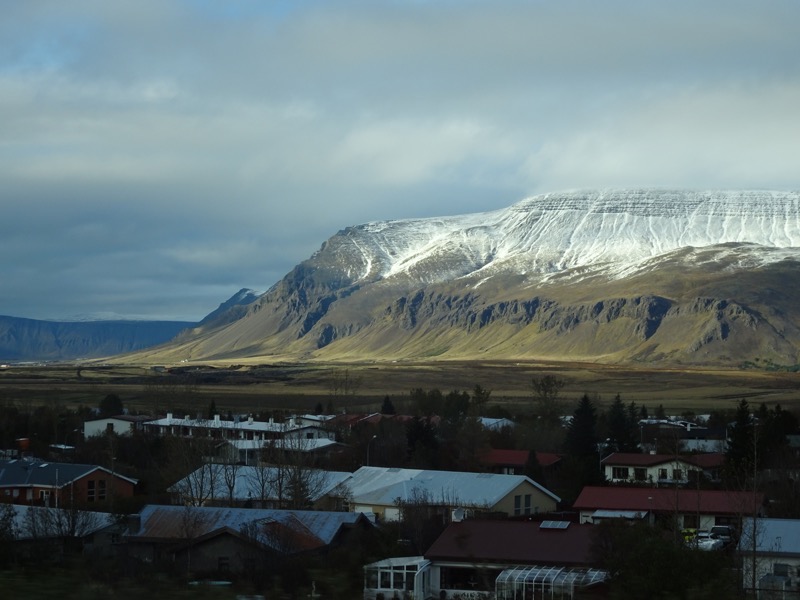 Harpa Concert Hall in the afternoon sun:
Harpa Concert Hall in the afternoon sun: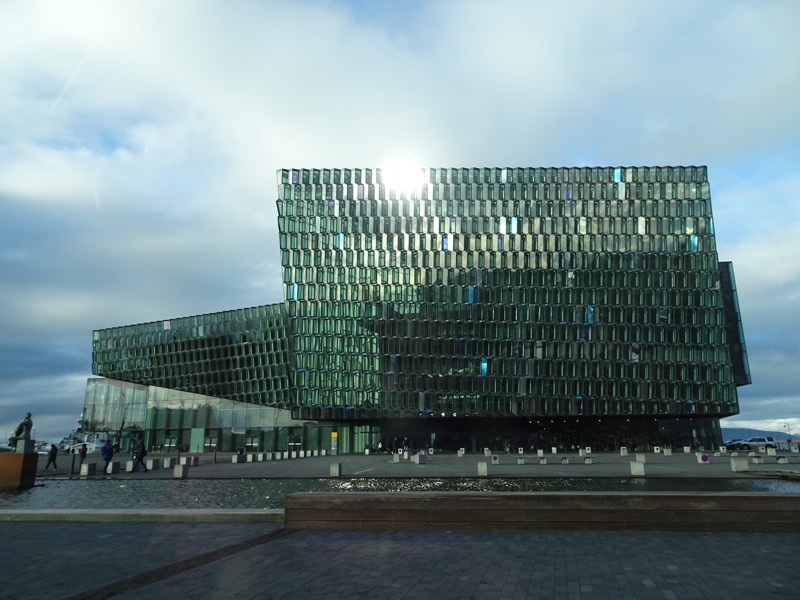
So we got back to our AirBnB place and were really hoping that there would be a letter here for us – you see, I had left Brisbane in a bit of a distracted state and had forgotten to get our International Drivers Licenses out of the safe. Iceland carhire companies don’t care – they can read your English license – but we are not going to have the same benefit of the doubt on the rest of the trip, so I had asked Mr K to mail them for us. Between not having an address to send it to, and a public holiday last week in Australia, we were cutting it pretty fine to receive it before we leave Iceland. It should have been delivered today, but wasn’t. So we hightailed it to the post office, 15 mins before they closed to find out what had happened to the documents.
Initially, the post office lady couldn’t find it at all – the tracking number was coming up with no info, my name was coming up with no infor, but thankfully she was able to search by intended address and ta-da! Our letter was right her the back room of that very post office waiting for us! OMG, all the reliefs. One less thing to worry about tomorrow.
We had an hour or so before we were supposed to be heading out to Grindavik to see the famous Blue Lagoon. Many people recommend flying into Iceland and visiting here to recover from your long haul flight – personally, I think we have done this the right way around, and are visiting to recover from our two weeks of unusual beds, unusually cold and wet weather and the running around like tourists.
The Blue Lagoon is a huge thermal hot spring located in the middle of a lava field with warm waters are rich in minerals like silica and sulfur. It’s supposed to be good for your skin, but I have to say it did nothing but dry me out. It’s also known to trash your hair so they give you loads of conditioner to put on *before* you get in the hot springs. Being a bit of an indoor sort of girl most of the time we had opted for a nighttime booking – I am not keen on standing around in the hot water in the full sun (not that it’s been sunny much since we got here!), but the booking was made before we left home. So night bathing it was.
The place was a madhouse – hundreds of people everywhere, ‘conductors’ standing on stools telling people how it works and what to expect, and just people, people everywhere – even though it’s offseason, freezing cold (literally 1C) and nighttime?! We got out towels, had our showers and head for the springs. It was very relaxing, or at least it could have been if there were not so many young people boozing up and yelling and yahooing at each other :/ Not my idea of a relaxing time at a hot spring. Anyway, the lagoon is enormous so we managed to stay away from those peoples as much as possible. Because of the water and the abrasive nature of it – I didn’t have a camera with me, so I found some quick promo pics that are similar to our experience there today.

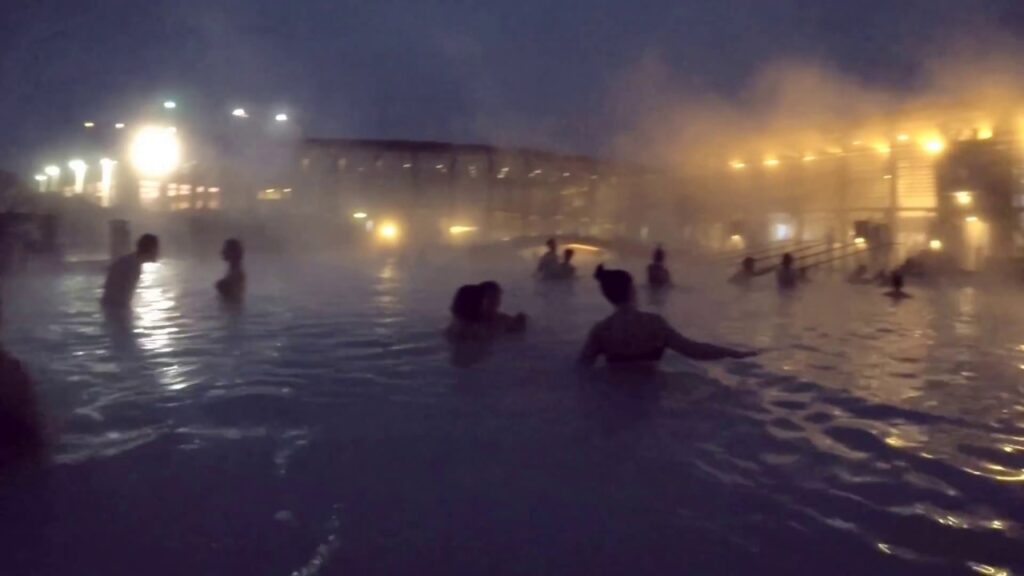 It was lovely and steamy, and the water was just the right amount of hot. After our soak, we had a dinner reservation at the Blue Lagoon Lava Restaurant. When looking at the place from home, we were shocked at how overpriced it was… thought it must have been tourist central prices. But now we have been here a while, we realise, it’s not really – it’s just Iceland prices. So we made a dinner booking. The Lava restaurant is lovely, it caters to the spa clients and you can turn up in your bathrobe at lunchtime if you so desire.
It was lovely and steamy, and the water was just the right amount of hot. After our soak, we had a dinner reservation at the Blue Lagoon Lava Restaurant. When looking at the place from home, we were shocked at how overpriced it was… thought it must have been tourist central prices. But now we have been here a while, we realise, it’s not really – it’s just Iceland prices. So we made a dinner booking. The Lava restaurant is lovely, it caters to the spa clients and you can turn up in your bathrobe at lunchtime if you so desire.

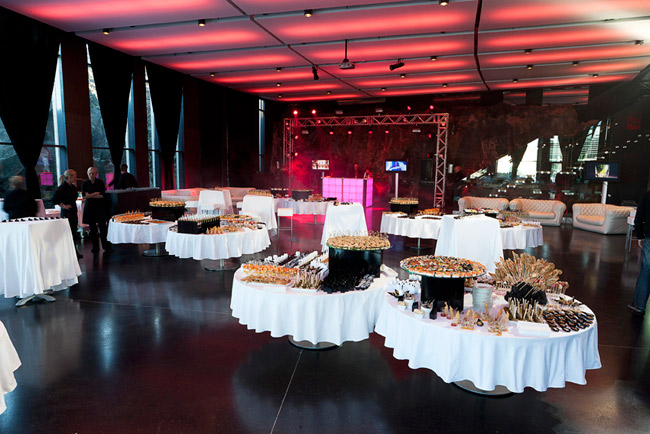
My only complaint is the lighting… the ceiling has strong pink lights in it, which makes everyone look ruddy and red-faced. It also makes your food a little hard to look at, which seems a bit of a design flaw rather than a design element:
Cured beef w~ Brennivín, blueberries, black garlic mayonnaise, beer bread
Langoustine soup – Garlic marinated langoustine, dulse
Lamb fillet and shoulder of lamb w~ Rutabaga, carrots, rhubarb, thyme
Grilled beef tenderloin w~ Wild mushrooms, crispy potatoes, onion jam, dijon mustard
Crispy potatoes – that is what you call french fries when you are a pretentious git writing a menu. All delicious though (well except the fries, I didn’t eat them).
The only down side of our night bathing and then dinner on site? Having to brave the cold to get back to the car park (about 500m away) and then drive the 40 mins back to Reykjavik in a car that was just warming up nicely as we got back to our AirBnB. 🙂
Huge day, with much seen and so much done.
